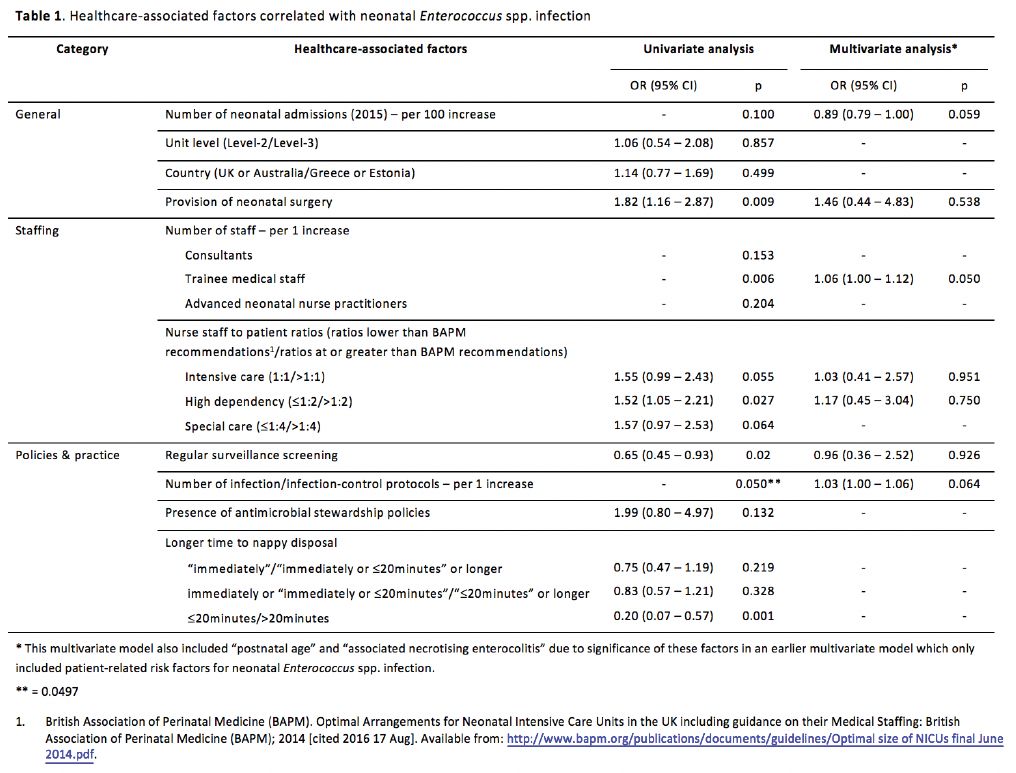Healthcare-Associated Factors Correlated with Nosocomial Neonatal Enterococcal Infection
J. Wang, C. Kortsalioudaki, J. Buttery, T. Watts, T. Scorrer, N. Spyridis, T. Zaoutis, J. Kopsidas, K. Tan, M. Anthony
35th Annual Meeting of the European Society for Paediatric Infectious Diseases (ESPID 2017)
Madrid, Spain, May 23-27, 2017
BACKGROUND: Enterococcus spp. are ubiquitous pathogens which cause significant morbidity in critically-ill neonates. However, healthcare-associated risk factors for these infections are not well-established. This study aimed to identify healthcare-associated factors correlated with neonatal enterococcal infection, with a view to improving infection prevention strategies.
METHODS: neonIN is a collaborative, multi-national, neonatal infection surveillance network which receives prospectively-collected infection data from 60 units worldwide (UK, Greece, Estonia, Australia). Infections cases from 2011-2016 were extracted from neonIN, with infection defined as a positive culture from a sterile site (e.g. blood, cerebrospinal fluid). Case data were then pooled with the findings of a unit-specific questionnaire distributed to all neonIN units. The questionnaire covered basic unit characteristics, based on British Association of Perinatal Medicine (BAPM) standards, and healthcare practices and policies data from 2011-2016. Univariate and multivariate analyses were performed using the Stata 14 statistical package.
RESULTS: 24 of 60 units (40%) responded to the survey, of which 21 were Level-3 (NICUs). Table 1 shows the influence of various healthcare-associated factors on the risk of enterococcal versus other infections. An increasing number of trainee medical staff was associated with an increased risk of enterococcal infection (per 1 increase: OR 1.06, 95% CI 1.00-1.12, p=0.050) while the ratio of nurse:patient did not have any significant influence.

CONCLUSIONS: Our study suggests that traditional healthcare-associated factors have little influence on the risk of neonatal enterococcal infection; strategies for preventing this infection should therefore focus on different risk factors.



